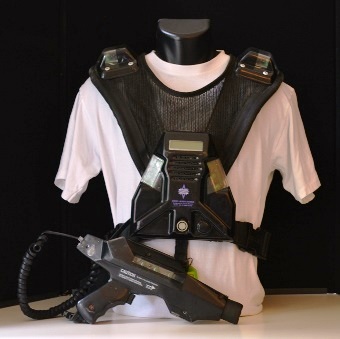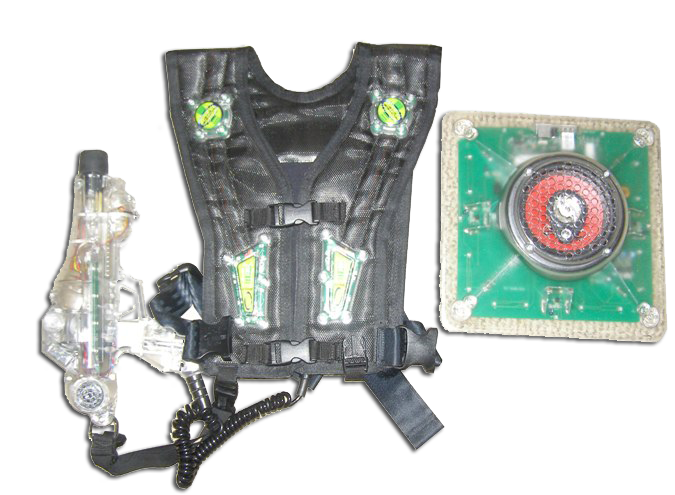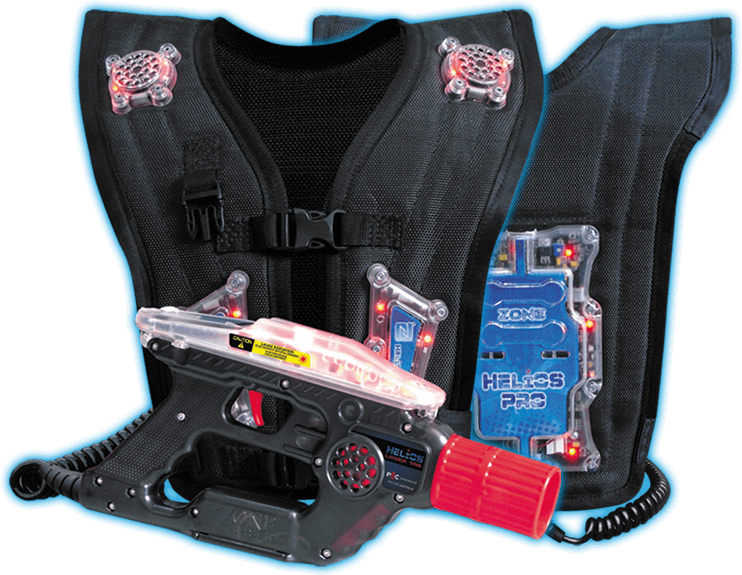
Zone Laser Tag is the branding used by P&C Micros for their laser tag systems. Zone Laser Tag has many brands, collectively known as the Zone Empire, used by various sites around the world. In Australia this is represented in the site names such as Megazone, Zone 3, Laserzone and Darkzone while Ultrazone is used in the US and Darkzone has been found in Canada. Not all sites using a Zone Laser Tag system use the Zone branding as many opt to use their own unique name with Laser Realm having been used in Werribee, Victoria. Timezone which is primarily known as an arcade centre in some locations also operate a Zone Laser Tag system.
South Australia has had a few Zone Laser Tag sites over the years with the first arena setup in the Downtown arcade on Hindley Street. This eventually closed and a few months later Dazzleland opened an arena at the top of the Myer Centre. Sadly we dont have much information on when both the Downtown and Dazzleland arenas opened and closed. The first Zone branded site, Zone 3, opened in July 2002. South Australia opened it’s second site, Laserzone in late 2010 breathing some new life into the scene. Zone 3 and Laserzone co-existed without any issue and Laserzone even had a team of players from Zone 3 compete in their league throughout 2011. Sadly in February 2012, Zone 3 closed it’s doors for the last time having been open for almost 10 years. October 2013 saw the opening of another Zone Laser Tag location at Kingpin Bowling in Norwood. This was an addon to the modern\high end atmosphere associated with Kingpin Bowling and ran a Nexus FEC system. In July 2015, Laserzone changed it’s branding to Megazone which also saw it’s evolution from a laser tag centre to more an entertainment centre and upgrade to the latest generation of Zone Laser Tag at the time; Helios.
Zone Laser Tag, created by P&C Micros started out as Phasor Strike in 1988 by improving on the tech of a New Zealand company called Laser Strike. Phaser Strike was the first and second generation systems of Zone Laser Tag which Phaser Strike became in 1989. The vests of Phasor Strike were relatively simple with just a chest and back sensor and a phasor that could be wielded with one hand but still featured a similar triangular design to what was used in the later generations, all the way up to Infusion. The scoring system was very simple with each player getting a point whenever they were shot and the winner was the player with the least points.
The V2 phaser was designed to be held with 2 hands and is what the first Zone system (V3) phasor appears to be based on. The Phasor Strike branding has recently been resurrected by P&C Micros for their more budget orientated system and foreign markets and it continues to use the V3 style phasor.


The transition to Zone Laser Tag brought in the introduction of the V3 system which became the style of Zone Laser Tag packs through 6 generations V3, V4, System Q, System Z, System T and finishing on Infusion (also known as T2).
Throughout these generations of Zone Laser Tag systems, features like full scoring systems, hand sensors to detect when players weren’t holding the phasor safely, a variety of different sound effects, player memberships for custom names, custom game modes and scoreboards were introduced. These systems also brought with them additional arena equipment like team bases players could destroy, mines that would randomly kill all players in sight, reloads for health and ammo and sentinels that would act like a sentry for whatever team took control of them. Zone Laser Tag became one of the most fully featured laser tag systems available on the market.
Proceeding the Infusion system was the Nexus Generation. This system came in 2 variants and brought about a complete re-design of the equipment. The pack was much lighter and slimmer and easier for players to put on and take off like a vest rather than over the head like all previous versions. The phasor was more rounded and more comfortable to hold although slightly heavier owing to the more durable plastic. The base was more compact as well and changed from being a dome to a more pyramid shape. All equipment was upgraded with transparent plastics with bright and vibrant RGB lighting that could change depending on team or game mode allowing for more flexible team sizes whereas the previous systems had fixed colours per pack. The phasor was also upgraded with a green laser over the old red and a screen which could give real-time feedback.
The 2 variants were Nexus FEC (Family Entertainment Centre) and Nexus Pro. FEC was a more cut down version with a monochrome screen and a limited variety of game modes designed for more low cost setups. The Pro version had a colour LCD and the ability to load a vast library of game modes from the traditional Capture The Flag to more complex formats like Kaboom, a game where you had to shoot all 3 bases around the arena without getting shot by other players. This was geared towards dedicated laser tag centres.
Nexus received an update a couple of years later known as Nexus Gen 2 which was a mostly under the hood upgrade making the packs more responsive and more consistent. Also during this time a portable system was developed known as Bageara which was an entire pack condensed into just the Nexus phasor. This was designed for temporary popup locations that could be quickly setup for a day or so and then packed up and moved.


Here is where we arrive at the current generation of Zone Laser Tag hardware. The Helios system released in 2014 uses the same vest style from the Nexus system but with a huge upgrade under the hood. The entire system now uses WiFi instead of RF meaning equipment suffers from much less signal interference. Like Nexus, Helios has an FEC and Pro version with the phasor for the pro version getting a complete overhaul.
The Helios system overcame a problem that had plagued the Nexus system which was being unable to tag a player that had just fired a shot as the system didn’t have the ability to receive a tag in a small window after the trigger was pulled. The additional processing power inside the Helios system also meant that the startup sequence when a pack powers up after being shot was more streamlined. This resulted in a huge change in the competitive scene and many players had to completely change their play-styles.
The new phasors now feature a touch screen and a touch sensetive area on the side of the phasor which allows the players to interact with the game in new ways changing “weapon types” on the fly and activating power-ups obtained in the game.
P&C Micros continues to develop and create new Zone Laser Tag systems to this day with a new system and equipment undoubtedly in the works.

